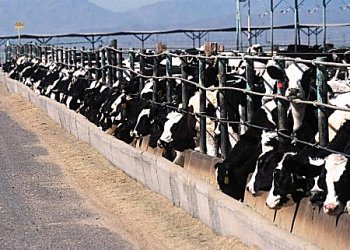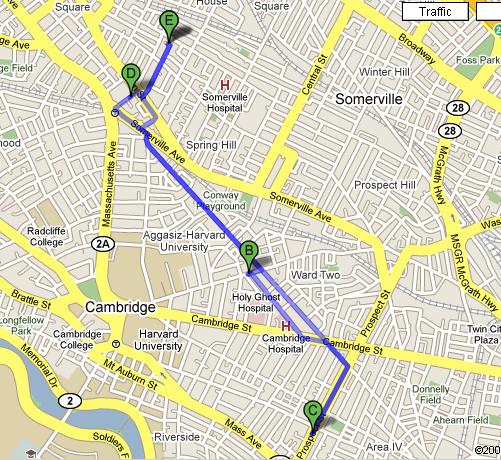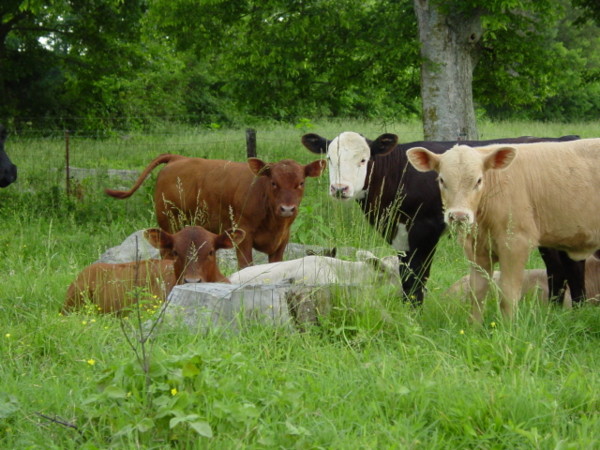My Journey for Sustainable Food
/Last winter, my husband Dan and I noticed we were beginning to struggle in our quest for fresh, local food. As a Californian learning to endure my first Boston winter, I wanted more variety in our produce. At the same time Dan, a culinary school student, was learning more and more about the role of things like corn syrup and stabilizers in processed food. Between the two of us, we often ended up wondering what we could do to ensure that what we put into our bodies was healthy, fresh and ultimately unprocessed. So we took up cooking more and expanded our repertoire to include items like homemade bread, chicken stock, ice cream and others. Still, in hindsight we relied more often than we would have liked on cheap meat, poultry and dairy – often because it was what we could afford.
All of this came full circle recently in the sustainability class I took a few weeks ago. The day we talked about global food production – including factory farms, or Concentrated Animal Feedlot Operations (CAFOs) in the U.S. – I felt like the world opened up and swallowed me with it.

(Ashley’s Note: CAFOs are hugely depressing operations, in my opinion. For your sake and mine, I am not going to recount just how unhealthy and harmful these farms are for animals, for humans, for our economy and for our environment. I’ll just say that for a brief intro, google “Factory Farm” and see what comes up…)
Anyway, I had always wanted to believe that factory farming wasn’t my problem. Sure, Dan and I would buy our meat at big grocery stores and not really ever give any thought to where it came from. But, hey, this kind of farming was going on somewhere far away – so we couldn’t really see it. Plus, we were starving students and the meat was cheap. Right? Wrong.
In fact these are all really lame excuses.
As soon as I heard the food lecture I knew we had been fooling ourselves. This was our problem. Our meat purchases at big grocery chains had unknowingly given a vote of confidence to Perdue and Tyson and all the other CAFO operators that their way of doing business was ok with us. But it wasn’t.
The day after our class ended, I woke up ready for action. Convinced there had to be a way for me to find locally and sustainably-raised meat, poultry and dairy in Boston, I got to work doing research. I planned my route, put on my walking shoes, grabbed my grocery cart and reusable grocery bags, and set out on my adventure.

- Courtesy: Google Maps. Distance: 4.6 miles (Note: start and end point located at point E).
I would first hit Savenor’s in Cambridge, a local favorite with well-known ties to sustainable farms. Surely they would have plenty of “free-range/grass-fed/happy animal” meat to buy. Knowing I might need a back-up plan, I figured that worst case I could go to Whole Foods, just a short walk away from Savenor’s. They may be pricey, I thought, but at least they’ll have a selection.
Four hours and almost five miles later, I ended up at the Shaw’s Market near my house feeling defeated and depressed. I did go to Savenor’s, but was dismayed to see that much of their meat was unlabeled and therefore gave no indication of where it had come from. When I asked a salesman the origins of a particular pork loin, he simply said, “Iowa”. While this may not have immediately signaled “CAFO,” his comment still concerned me because of the issue of how far this pork had to travel in order to reach the market. Surely, I thought, there are farms closer to Boston that raise pigs?
Next I went to Whole Foods, prepared to hand over what little money I had in the name of sustainable farming. Unfortunately here, though, the prices were just so amazingly steep that I actually couldn’t rationalize paying for food, no matter how free-range the animals were.
At this point, I was exhausted, dehydrated and completely without a Plan C. And the worst part was that I still needed groceries! So I surrendered and slowly made my way to the Shaw’s near my house. While Shaw’s is certainly not a terrible market, to me it signified my failed attempt to find and support local, sustainable food production in my own backyard.
That evening, I came home with my full cart of groceries and got to work thinking about solutions. My pilgrimage around Cambridge had taught me that finding responsibly-raised meat would be harder than I thought.
But I was convinced that I could find a way to eat healthy and locally, while also supporting the right kind of farms.
In the end, after considerable discussion, Dan and I decided to sign up for a share in a local CSA farm. Community Supported Agriculture represents “a shared commitment to building a more local and equitable agricultural system, one that allows growers to focus on land stewardship and still maintain productive and profitable small farms”[i]. Stillman's Farm, located in Hardwick, MA, is a CSA that raises its animals according to its own “Conscientiously Grown Philosophy”:
Our farm offers conscientiously raised, grass-fed and pastured, hormone-free meats and poultry. We believe in raising our animals in a manner that is humane and respectful, a respect that extends not only to our animals but to our land as well. Our sustainable, more holistic approach to animal husbandry yields better tasting, safer, and more nutritious meats and poultry.
I had considered the idea of a CSA for produce in the past, but I did not know that meat CSAs existed until a few weeks ago. Given the fact that neither Dan nor I plan to become vegetarians anytime soon, the CSA meat share seemed like a smart, responsible way to use our wallets to support something we believe in.
We pick up our first share in late October and we cannot wait to start cooking!
Interestingly, this little experiment (plus all of the research I have done into the U.S. farm industry) has really informed how I look at all of my purchase decisions – from food, to consumer goods, to energy and water consumption. And it has gotten me talking to everyone else about what I learned. The education and awareness I have recently gained has now been passed on to other people in my life – a true ripple-effect that has started impacting how my friends and loved ones relate to and understand their food.
This is perhaps the most profound learning of all: when it comes to an industry as powerful and far-reaching as factory farming, it is easy to assume that one person can’t make a difference. In my lowest moments, I worried that there was no way that I alone could take a meaningful stand against this kind of production.
But the last few weeks have shown to me that, in fact, one person standing up is all it takes to get people talking - and acting.
[i] USDA National Agriculture Library. Retrieved September 11, 2009 from http://www.nal.usda.gov/afsic/pubs/csa/csadef.shtml


